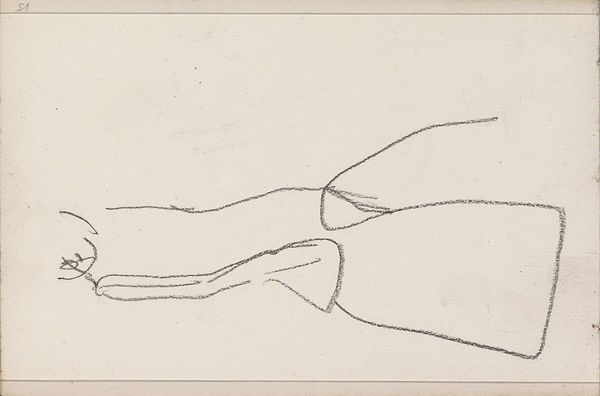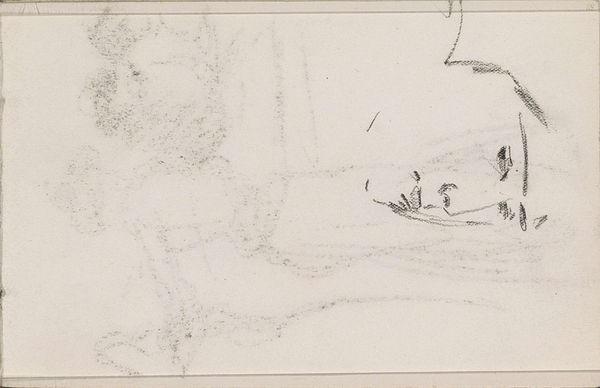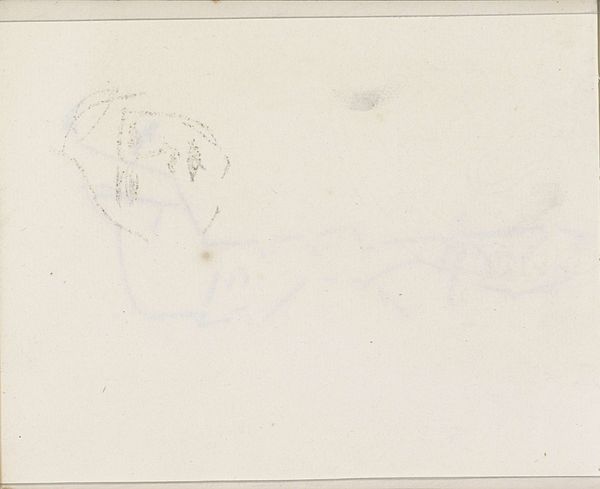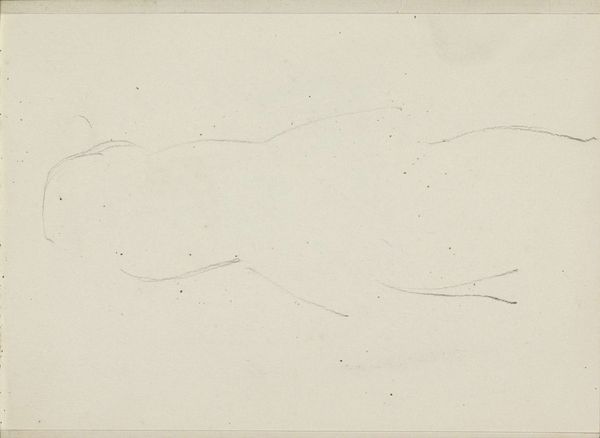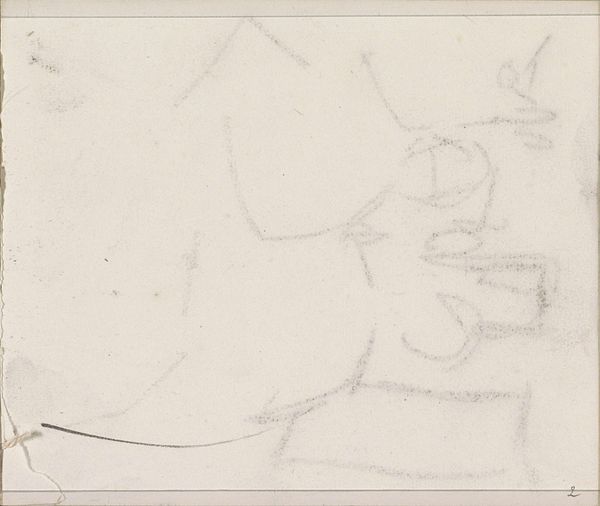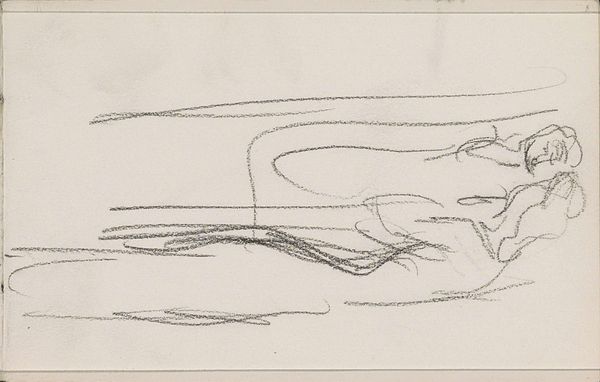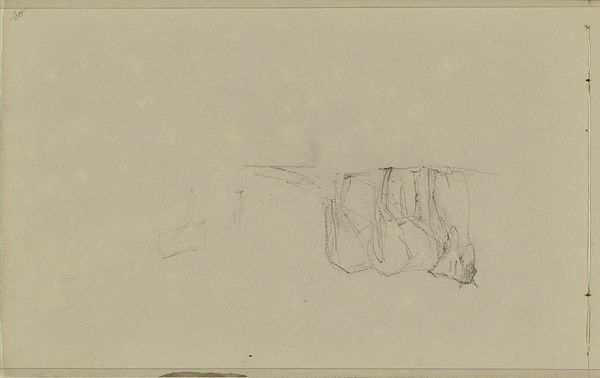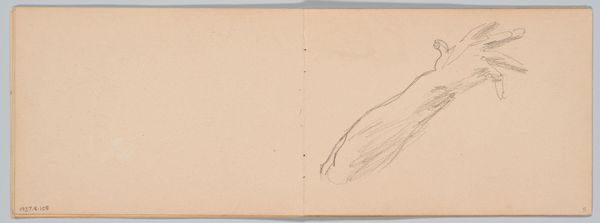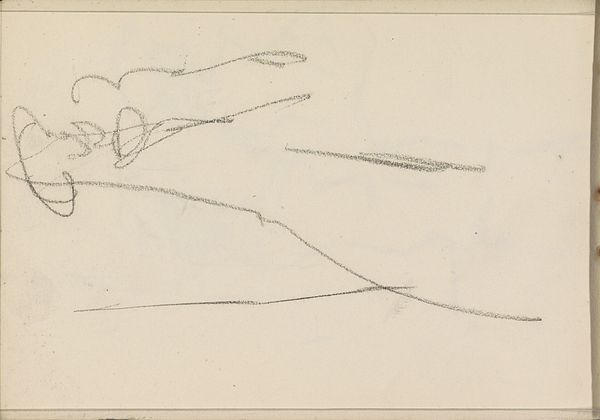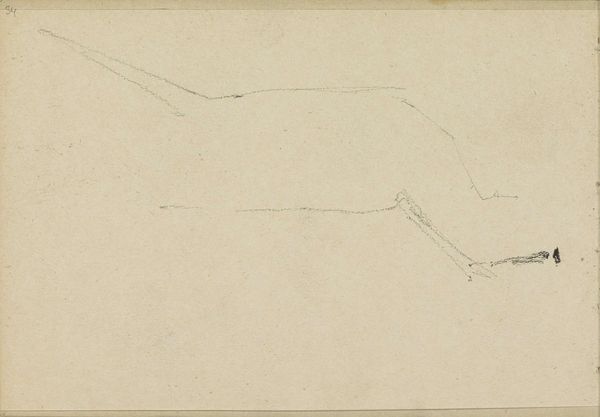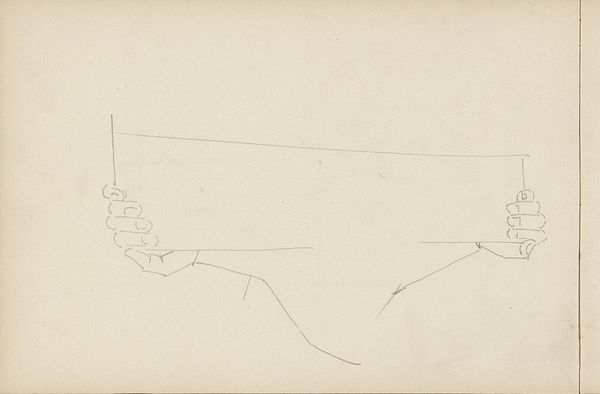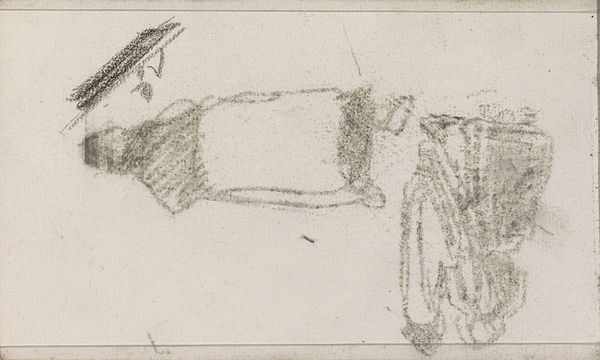
Copyright: Rijks Museum: Open Domain
Editor: This is "Abklatsch van de krijttekening op blad 6 verso," a pencil drawing on paper, dating between 1875 and 1934, by Isaac Israels. It's… faint. Ghostly almost. What do you see in this fleeting image? Curator: I see the echo of something. The German term "Abklatsch" itself suggests an impression, a rubbing. In this case, a transfer of chalk or pencil. What remains is the cultural memory embedded within that transfer. We see the barest bones of figuration, possibly a portrait, perhaps capturing a likeness more felt than seen. Consider the very act of transferring – what meaning can be found in reproducing images and re-presenting it, not as the thing itself, but as its shadow? Editor: So, it’s almost like a memory of a memory? Curator: Precisely! The original is already an interpretation of a subject, and this print or tracing adds another layer of interpretation. The emotional weight shifts. It isn't about perfect replication, but about the essence. We perceive it through a glass darkly, as it were. It encourages the viewer to contemplate themes of identity, reality, perception itself - particularly in Impressionist art from this era. The haziness amplifies meaning here. The vagueness suggests how we ourselves build identities by drawing conclusions. Editor: It's fascinating how the method informs the image so deeply. Curator: Indeed! Do you find it successful in evoking that sense of lingering presence? Does this type of cultural artifact generate unique artistic meanings for you? Editor: It does now! Knowing about that extra step in its creation makes me feel connected to the hand of the artist, and also to that shadowy, faded figure, somehow. Curator: It is as though we are tracing time. The artifact captures a moment both ephemeral and eternal, don’t you think?
Comments
No comments
Be the first to comment and join the conversation on the ultimate creative platform.
